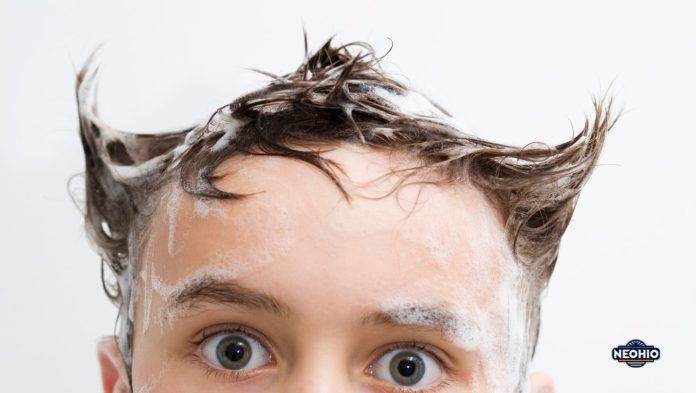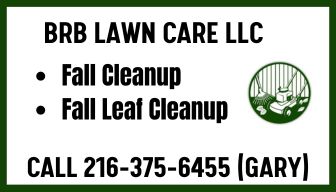When it comes to hair care, most of us have been conditioned to believe that cleaner is better. But throughout Northeast Ohio salons and across fashion capitals worldwide, professionals share a surprising secret: sometimes, unwashed hair actually looks better.
This isn’t just a myth – it’s a technique deliberately employed by runway models and celebrity stylists who understand that a bit of natural oil can transform lackluster locks into magazine-worthy manes.
The Model Method: Strategic Washing
Models preparing for runway shows follow a specific hair protocol that might surprise the average shampoo enthusiast. Rather than washing the morning of a show, models are instructed to wash their hair the previous day.
“It’s usually best to do this in the morning the day before the show, so your hair isn’t too clean and doesn’t have a day’s worth of product build-up,” explains one runway preparation guide. This calculated timing creates the perfect canvas for stylists to work with: hair that has enough natural oil to hold style without being weighed down by excessive product residue.
Celebrity models have embraced this approach beyond the runway. Stars like Kylie Jenner, Nicola Peltz, and Gigi Hadid reportedly go multiple days without washing to help their scalp and hair restore natural moisture. This isn’t neglect – it’s strategic hair care that prioritizes hair health over arbitrary cleanliness standards.
The Science Behind Second-Day Success
What makes slightly “dirty” hair so desirable? The answer lies in the science of sebum – the natural oil your scalp produces.
When you don’t wash your hair every day, these natural oils have time to distribute along the hair shaft, creating several beneficial effects:
- Natural conditioning: Sebum coats each strand, reducing frizz and creating a smoother appearance
- Improved texture: A day or two of natural oils adds subtle weight and manageability to otherwise flyaway hair
- Better styling grip: Styling products adhere better to slightly unwashed hair, as freshly washed strands can be too slippery for proper hold
- Enhanced volume: The right amount of natural oil can add body and dimension to otherwise flat hair
For many, hair doesn’t reach its styling prime until it’s been a day or two since washing. This explains why that blowout often looks better on day two than when you first walked out of the salon.
The Downside of Over-Washing
Washing hair too frequently doesn’t just rob you of your best styling days – it can actually damage your hair over time. Hair experts caution that daily washing:
- Strips natural protective oils, leaving hair prone to dryness and breakage
- Creates a problematic cycle where over-washing leads to increased oil production
- Fades color faster in professionally dyed hair
- Can irritate the scalp, potentially increasing dandruff or itchiness
- Requires more styling time and product use daily
“Over-washing can strip natural oils from your hair, making it dull, dry, and coarse,” notes one dermatologist. While not washing enough comes with its own issues, finding the sweet spot for your hair type creates both healthier hair and better styling results.
How Long Can You Go? Hair Type Matters
The ideal washing schedule varies dramatically based on hair texture and type:
- Fine hair typically becomes greasy quickest, often looking best when washed every 1-2 days
- Medium-textured hair can typically go 2-4 days between washes
- Thick, coarse or curly hair may look and feel best when washed only once a week or even every two weeks
Those with tight curls or coils benefit most from extended times between washes, as these hair textures struggle to distribute natural oils from scalp to ends. Washing too frequently can leave curly hair perpetually parched and prone to breakage.
Pro Tips for Extending Time Between Washes
Models and stylists rely on several techniques to keep hair looking fresh during long stretches between shampoos:
- Strategic dry shampoo application: Apply at the roots the night before you expect to need it, allowing it to absorb oils overnight rather than creating visible residue
- Embrace different styles as days progress: Start with hair down when cleanest, then transition to textured styles, braids, and finally updos as days pass
- Use the right tools: A boar bristle brush helps distribute natural oils from roots to ends, preventing the “oily roots/dry ends” problem
- Avoid touching: Constantly running fingers through hair transfers oils from hands to hair and stimulates the scalp to produce more oil
- Cool water rinse: On non-washing days, a cool water rinse without shampoo can refresh hair without stripping oils
One runway model notes that her seventh day without washing often receives the most compliments, especially when styled in a texturized ponytail that capitalizes on the natural oils for hold and shine.
The Balanced Approach
Despite the benefits of strategic washing, there are limits to how long you should go between shampoos. Extended periods without cleansing can lead to:
- Buildup of oils that trap dirt and environmental pollutants
- Potential scalp issues including itchiness or dandruff
- Unpleasant odor as oils mix with environmental elements
- Possible ingrown hairs from excessive oil production
The goal isn’t to abandon washing entirely but to find your personal sweet spot where hair looks its best while maintaining scalp health.
Finding Your Perfect Schedule
The ideal washing frequency depends on multiple factors unique to each person:
- Hair texture and type (fine to coarse, straight to coily)
- Scalp condition (dry, normal, or oily)
- Activity level (frequent heavy workouts require more washing)
- Climate and season (humidity affects oil distribution)
- Styling product usage (heavy products need more frequent cleansing)
Many hair professionals recommend gradually extending time between washes, allowing your scalp to adjust its oil production accordingly. What starts as an oily day two can become a manageable day three or four as your scalp adjusts to less frequent washing.
The Final Verdict
While fashion models might stretch to a full week between washes for professional reasons, most people find their ideal schedule falls somewhere between every other day and twice weekly. The key is observation – identifying when your hair transitions from “perfectly lived-in” to genuinely dirty.
Next time you reach automatically for the shampoo bottle, consider whether you might be washing away your hair’s potential best day. That slightly “dirty” look might just be what separates ordinary hair from model-worthy locks.
Discover more from Northeast Ohio News
Subscribe to get the latest posts sent to your email.











